Mastering is an art form, one that requires a delicate balance of technical skills and creative intuition, especially when dealing with different musical genres. Each genre, be it pop, rock, electronic, classical, jazz or Hip Hop, brings its own set of challenges and nuances to the mastering table. Understanding these subtleties is crucial for any music producer aiming to deliver a master that does justice to the artist's vision.
In this deep dive, we'll explore how mastering approaches vary widely between these genres. We'll focus on the fine art of tailoring EQ, managing dynamics, and strategizing loudness to suit the unique characteristics of each musical style. Whether it's the punchy bass of electronic music or the dynamic range of a classical piece, mastering these elements is key to ensuring your track not only sounds great but also resonates with its intended audience.
One indispensable tool in this process is REFERENCE by Mastering The Mix. This plugin stands as a beacon for quality comparison, allowing you to measure your mixes against industry standards and fine-tune them to perfection. We'll dedicate a special section to show you how to make the most out of REFERENCE, ensuring your tracks stand shoulder to shoulder with the best in the business.
Join us on this sonic journey as we unravel the secrets behind mastering different genres, providing you with actionable instructions and insights to elevate your mastering game. Get ready to engage with a post that's not just informative, but also a pleasure to read from start to finish.

Understanding Genre-Specific Mastering
In the intricate world of music production, mastering varies significantly across genres. Each genre - Pop, Rock, Electronic, Classical, Jazz, and Hip Hop - has its distinct sound and audience expectations. Let's explore how mastering differs across these genres, focusing on their unique requirements and characteristics.
1. Pop Music Mastering:
Pop music is characterized by its broad appeal and polished sound. Mastering in pop focuses on enhancing clarity and brightness, ensuring vocals and key melodies shine through. The high frequencies are sculpted to add sparkle, and the mid-range is carefully managed for vocal clarity. The low end is tightened for a clean, radio-ready sound.
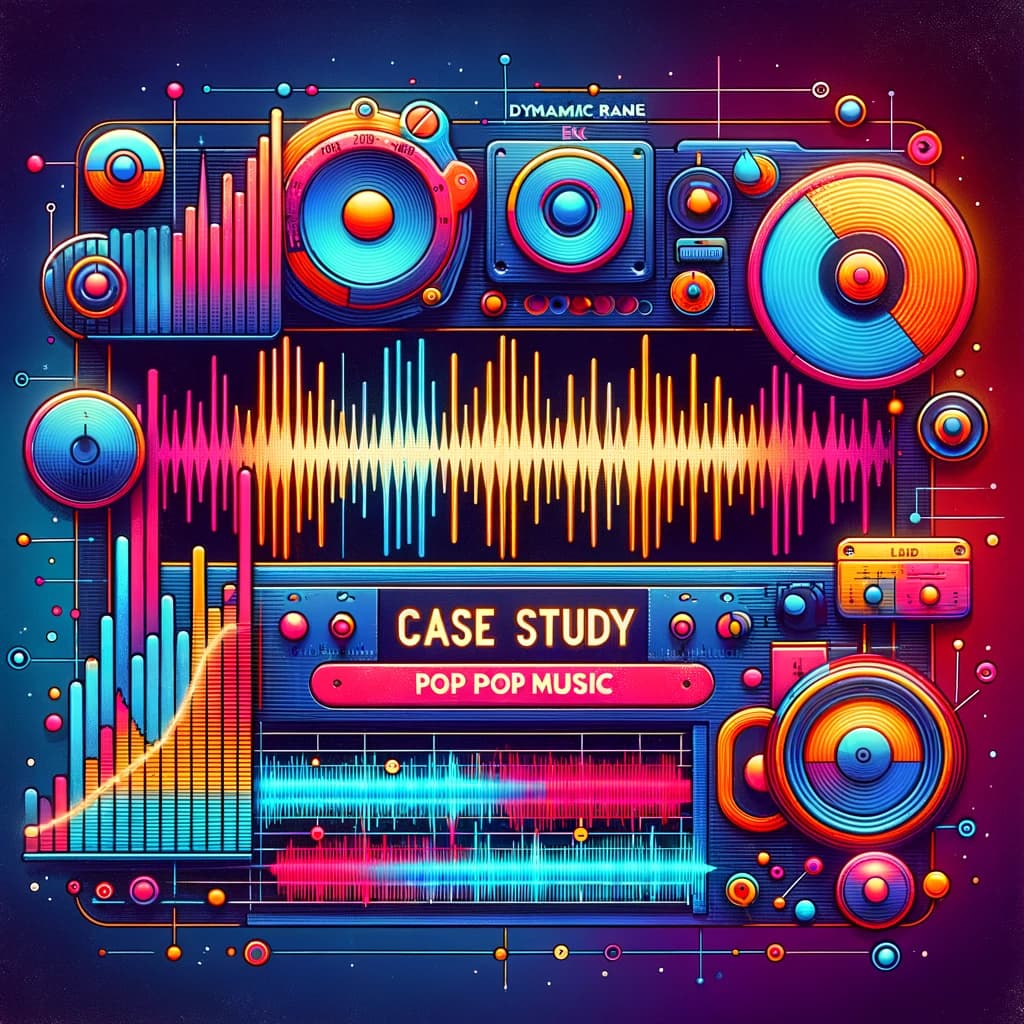
2. Rock Music Mastering:
Rock music demands a mastering approach that preserves its raw energy and dynamics. The focus is on the low-mids, which carry the weight of the guitars and the punch of the drums. Balancing these elements is crucial to maintain the driving force and edginess typical of rock music.

3. Electronic Music Mastering:
Electronic music is all about the beat and bass. Mastering in this genre aims to enhance danceability and energy. The sub-bass requires precise control for power and balance, while the mid and high frequencies need detailing to bring out the textures. Loudness is a critical factor for making an impact in club settings.
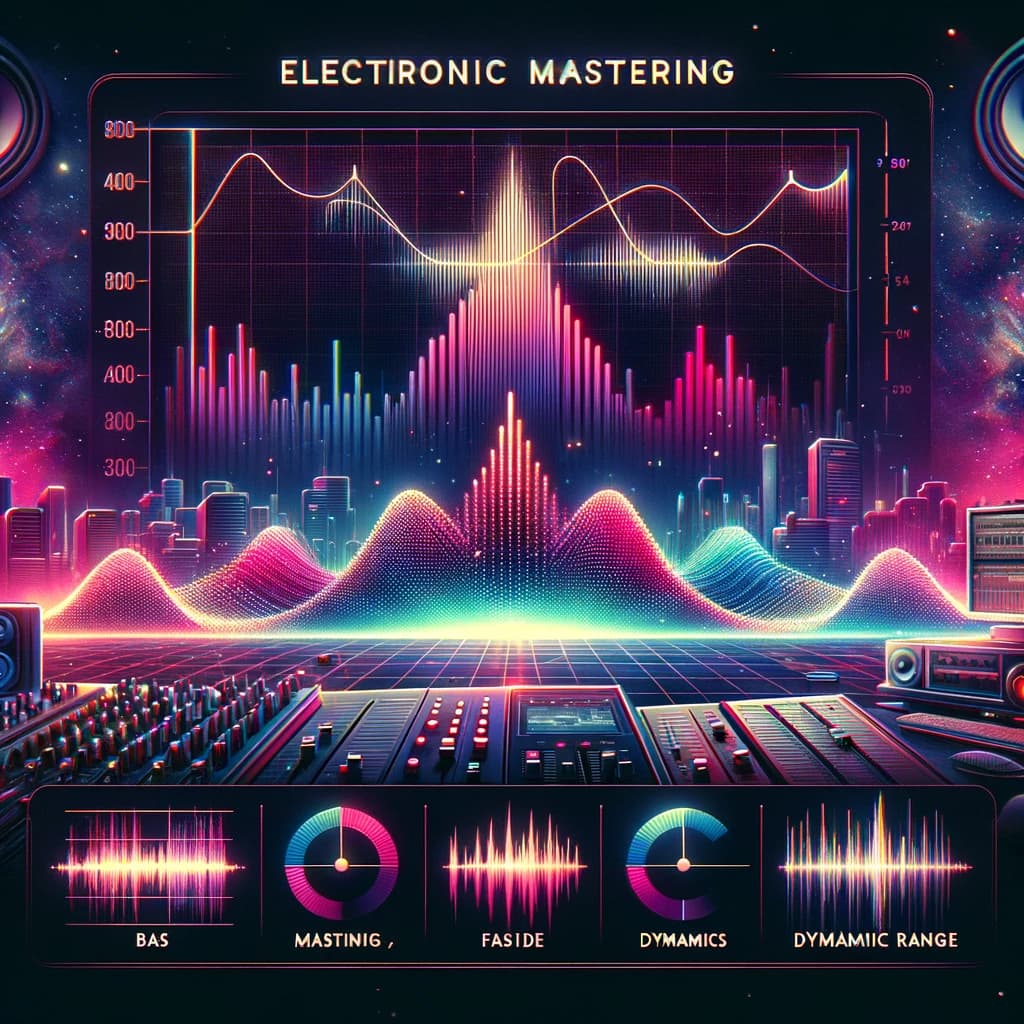
4. Classical Music Mastering:
Classical music mastering emphasizes the preservation of natural dynamics and tonal balance. The process strives for transparency, avoiding any coloration. A wide dynamic range is maintained to capture the expressiveness and emotional depth of classical compositions, with special attention to spatial qualities for an immersive experience.

5. Jazz Music Mastering:
Jazz mastering is a fine art of maintaining the genre's inherent warmth and organic feel. The mid-range is key for highlighting the nuances of brass and woodwind instruments, while controlling the low end to provide a solid yet unobtrusive foundation. The high-end is usually duller than other genres.

6. Hip Hop Music Mastering:
Hip Hop mastering revolves around the rhythm and groove, with a focus on low-end punch and vocal clarity. The bass and kick drum are critical elements, requiring precise EQ and compression to ensure they hit hard without muddying the mix. Vocals must cut through clearly, often requiring detailed attention to mid-range frequencies. The overall loudness is also crucial in Hip Hop to ensure the track stands out in a playlist or club environment.
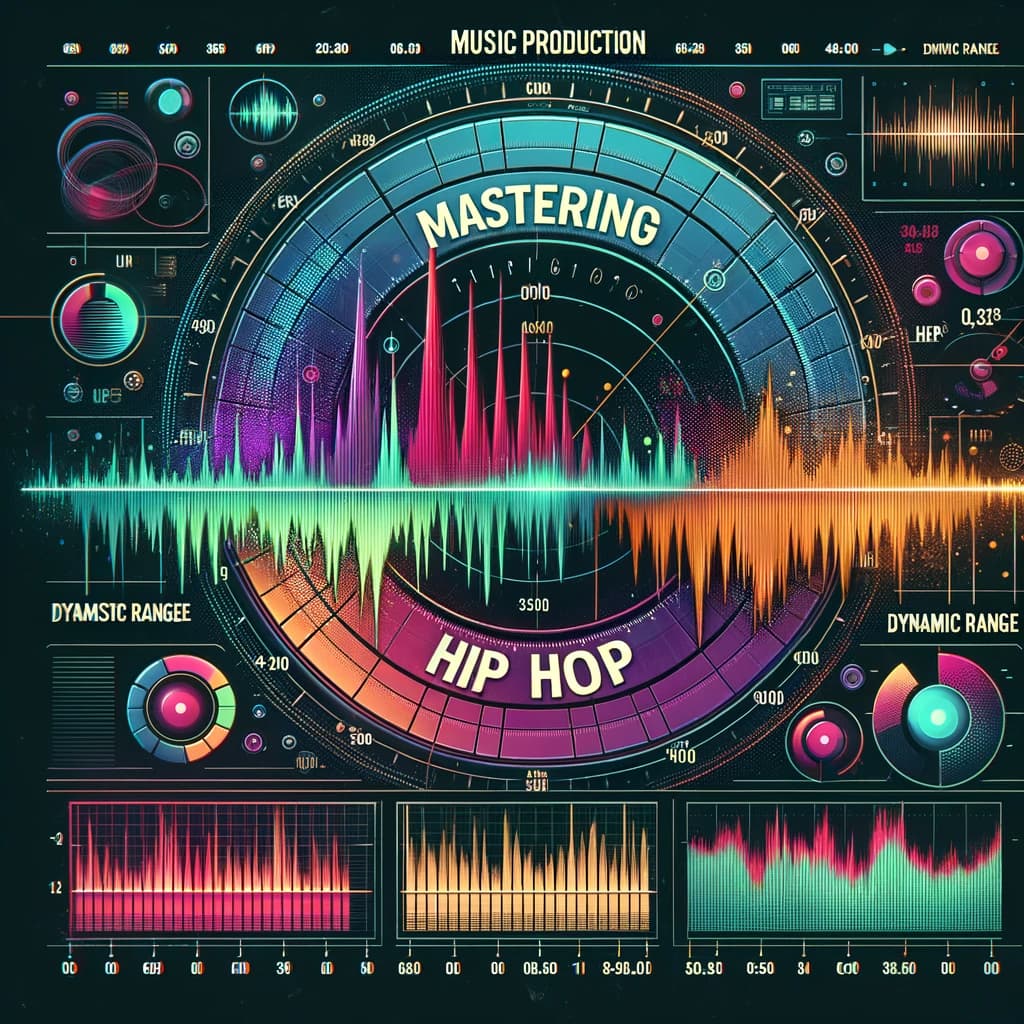
Mastering is a genre-specific craft, where understanding the distinct sonic characteristics and audience expectations is key. Whether it's the polished sound of Pop, the raw energy of Rock, the beat-driven nature of Electronic, the dynamic expressiveness of Classical, the nuanced warmth of Jazz, or the rhythm-centric focus of Hip Hop, mastering plays a pivotal role in bringing out the best in each genre.
Tailoring EQ for Different Genres
Equalization (EQ) is a critical tool in mastering, serving to balance frequencies and enhance the character of a track. However, the approach to EQ varies significantly across genres. Here, we delve into how EQ strategies differ for Pop, Rock, Electronic, Classical, Jazz, and Hip Hop.
1. Pop Music EQ:
In pop music, EQ focuses on clarity and vocal presence. High frequencies are often boosted slightly to add 'air' and sparkle, making the track sound more 'alive'. Attention is paid to the mid-range, particularly around the vocal frequencies, to ensure that the vocals cut through the mix clearly without being harsh.
2. Rock Music EQ:
Rock music EQ is centered around the midrange frequencies to bring out the energy of electric guitars and the punch of the drums. Cutting some of the low-mids can help reduce muddiness, while a slight boost in the upper mids can enhance the presence of guitars and vocals.
3. Electronic Music EQ:
Electronic music often requires a strong low-end and crisp high frequencies. Sub-bass frequencies are carefully managed to provide power without overwhelming the mix. High frequencies might be boosted for that characteristic brightness, giving life to synths and percussion.
4. Classical Music EQ:
In classical music, EQ is used sparingly and aims for transparency. The goal is to maintain the natural tonal balance of the instruments. Gentle adjustments might be made to correct any room or recording anomalies without affecting the inherent sound of the orchestration.
5. Jazz Music EQ:
Jazz mastering involves balancing warmth with instrumental clarity. A slight boost in the lower-mid frequencies can add warmth, particularly to acoustic bass and piano. Care is taken to ensure the higher frequencies of brass and woodwind instruments are clear without becoming piercing.
6. Hip Hop Music EQ:
Hip Hop music mastering focuses on the low-end punch and vocal clarity. The bass and kick drum are often given a boost in the lower frequencies for impact, while ensuring they don't overpower the mix. The vocal frequencies are carefully sculpted to ensure they sit prominently in the mix without clashing with other elements.
Each genre demands a unique approach to EQ, reflecting its distinct sonic characteristics. Mastering these subtleties in EQ settings is essential for a master that truly captures and elevates the essence of the music.

Dialling In The Perfect EQ
Our plugin BASSROOM is an EQ designed to fix the low-frequency balance of your overall track. BASSROOM analyses your production and shows you the EQ settings needed to get a powerful and well-balanced sound.
Load up BASSROOM on your master channel before your limiter. Select a preset or import your own reference track. Match the bands to the EQ target suggestions, then tweak to suit your preference.
The preset and and reference analysis targets are 100% unique to your music. BASSROOM analyses your audio to determine the EQ changes needed to match the tonal balance goal. It uses a revolutionary algorithm that is based on how the human ear perceives sonic energy. The unique filters in BASSROOM are optimized to shape low-frequencies during mastering. You won’t find another plugin that can adjust bass more transparently, retaining the punch and clarity of your music.
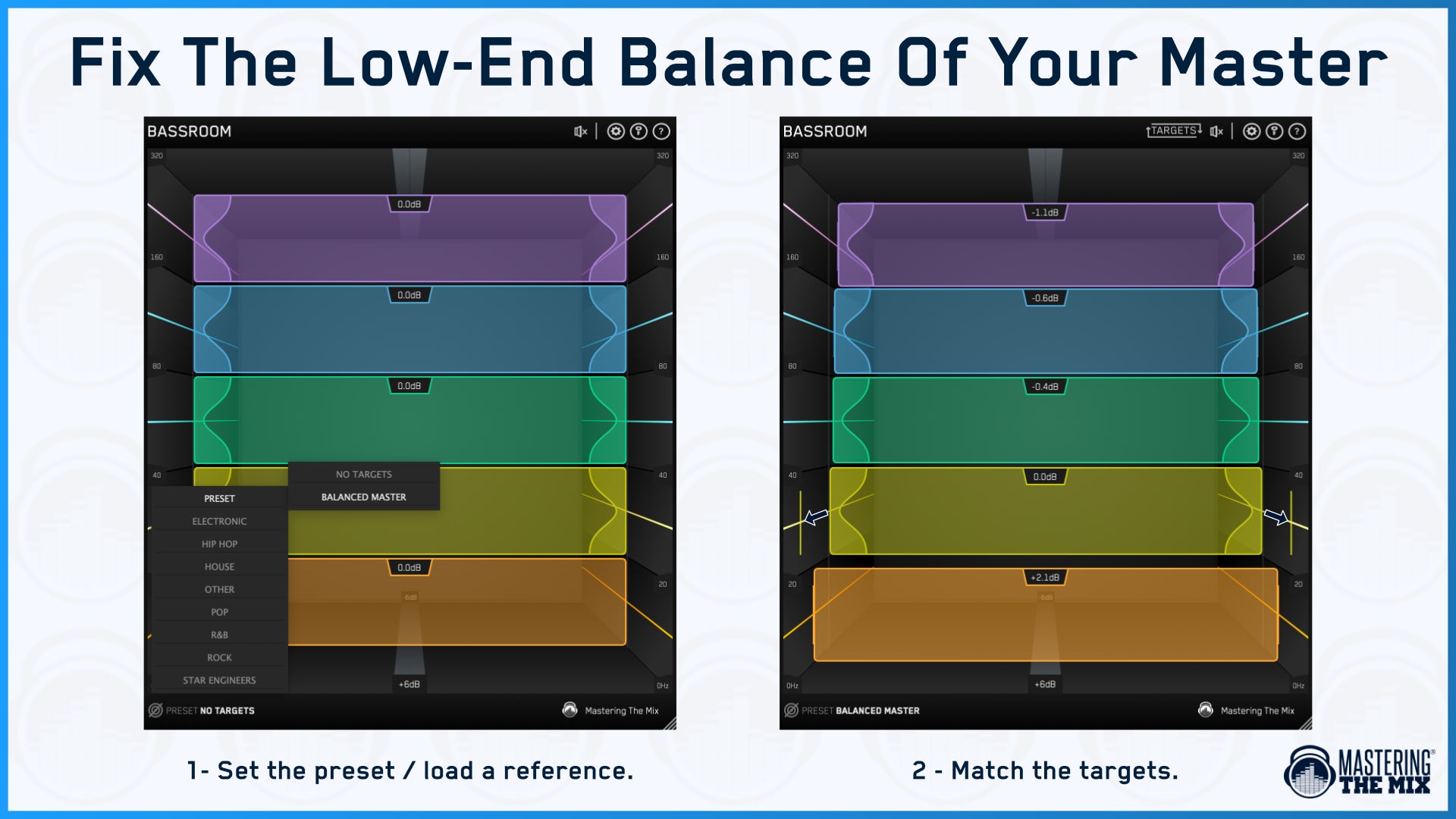
When adjusting the EQ on the master channel, you would generally want to go for broad Q bandwidths and EQ adjustments no greater than around 4dB. If the adjustments are greater than this then you may get more transparent results by going back to fix things in the original mix before mastering. Rules can always be broken and it’s the results that count. If a master needs to have a 6dB high-end boost to sound great then go for it.
Our plugin MIXROOM is perfect for dialling in a great sounding master the mid and high frequencies. It works in a similar way to BASSROOM where you can select a preset or load in your own reference track to generate tonal balance targets. You can also adjust the mid-side settings for each band, giving you total control over how you shape the frequencies across the stereo field.

When making EQ adjustments, be sure to adjust the output gain of the EQ to try and match the output loudness to the input loudness. This will help you objectively decide whether your EQ decisions are improving or deteriorating your sound when you bypass the plugin. Both MIXROOM and BASSROOM have a level match pointer on the output gain to help you do this instantly.
Dynamics and Loudness Strategies Across Genres
Dynamics and loudness are crucial elements in mastering, but their treatment can vary greatly across different genres. In this section, we explore how mastering professionals approach dynamics and loudness in Pop, Rock, Electronic, Classical, Jazz, and Hip Hop music.
1. Pop Music Dynamics and Loudness:
Pop music often aims for a polished and consistently loud sound without sacrificing too much dynamic range. Compression is used to control dynamics, making the track sound full and vibrant at various listening levels. The goal is achieving a balanced loudness that can compete in the commercial market, ensuring the track stands out on radios and streaming platforms. Most pop tracks on Spotify have a maximum loudness of -6LUFS short term max.
2. Rock Music Dynamics and Loudness:
The essence of rock music lies in its raw power and dynamic shifts. Mastering should preserve these dynamics, ensuring that the energy of the drums and guitars is not lost. Compression is applied more cautiously, maintaining the punch and allowing for natural crescendos and decrescendos that are characteristic of the genre. A loud target for rock is -7 LUFS short-term max.
3. Electronic Music Dynamics and Loudness:
In electronic music, mastering often pushes towards higher loudness levels due to the genre's prevalence in clubs and dance settings. Heavy compression and limiting are common to enhance the beat's impact. However, it's crucial to maintain enough dynamic range to keep the track from sounding flat and lifeless. Most Electronic tracks on Spotify have a maximum loudness of -6LUFS short term max.
4. Classical Music Dynamics and Loudness:
Classical music requires a much more delicate approach. The dynamic range is wide, capturing the softest and loudest parts accurately. Compression is used sparingly, if at all, to preserve the natural dynamics that are fundamental to classical music's emotional impact. A good target for Classical music would be to not exceed -9 LUFS short-term.
5. Jazz Music Dynamics and Loudness:
Jazz music thrives on its dynamic subtleties and nuanced performances. Mastering should respect these qualities, using minimal compression to retain the music's natural feel and expression. Loudness is not typically pushed to the extremes, focusing instead on preserving the dynamics that bring out the best in jazz's improvisational nature. A good target for Jazz would be to not exceed -9 LUFS short-term.
6. Hip Hop Music Dynamics and Loudness:
Hip Hop mastering is often a balance between achieving a punchy, loud sound and preserving the groove's dynamics. Emphasis is on the low end, ensuring the bass and kick hit hard. Compression is used to bring vocals to the forefront and to maintain a competitive loudness level without squashing the track's dynamic feel. Most Hip Hop tracks on Spotify have a maximum loudness of -6LUFS short term max.
Each genre presents unique challenges in mastering dynamics and loudness. A successful mastering engineer not only understands these genre-specific nuances but also how to apply them to bring out the best in each track.
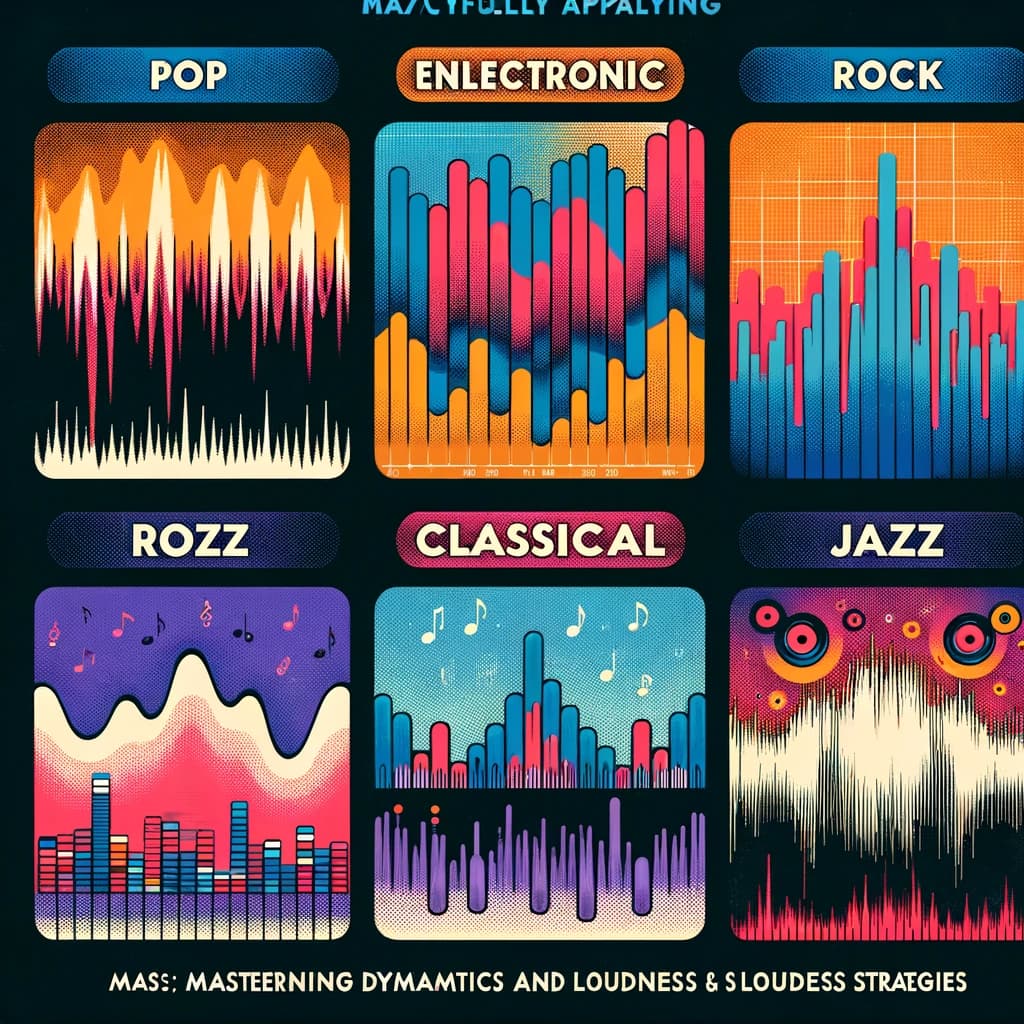
Using REFERENCE by Mastering The Mix
In the world of music production, ensuring your track stands up against well-established tracks in your genre is crucial. This is where REFERENCE by Mastering The Mix becomes an indispensable tool in the mastering process. REFERENCE helps you compare your mix to professionally produced tracks, providing clear insights into how your track measures up in terms of EQ balance, stereo width, and perceived loudness.
Introduction to REFERENCE
REFERENCE is designed to make the mastering process more accurate and efficient. By allowing you to directly compare your mix to selected reference tracks within your DAW, it provides real-time feedback on how closely your mix matches the tonal balance and stereo width of professional tracks in your genre. This immediate comparison is invaluable in making informed decisions during the mastering process.

Practical Application of REFERENCE
Loading Reference Tracks: Begin by loading a few well-mastered tracks in the same genre as your mix. These tracks should represent the quality and sound you're aiming to achieve.
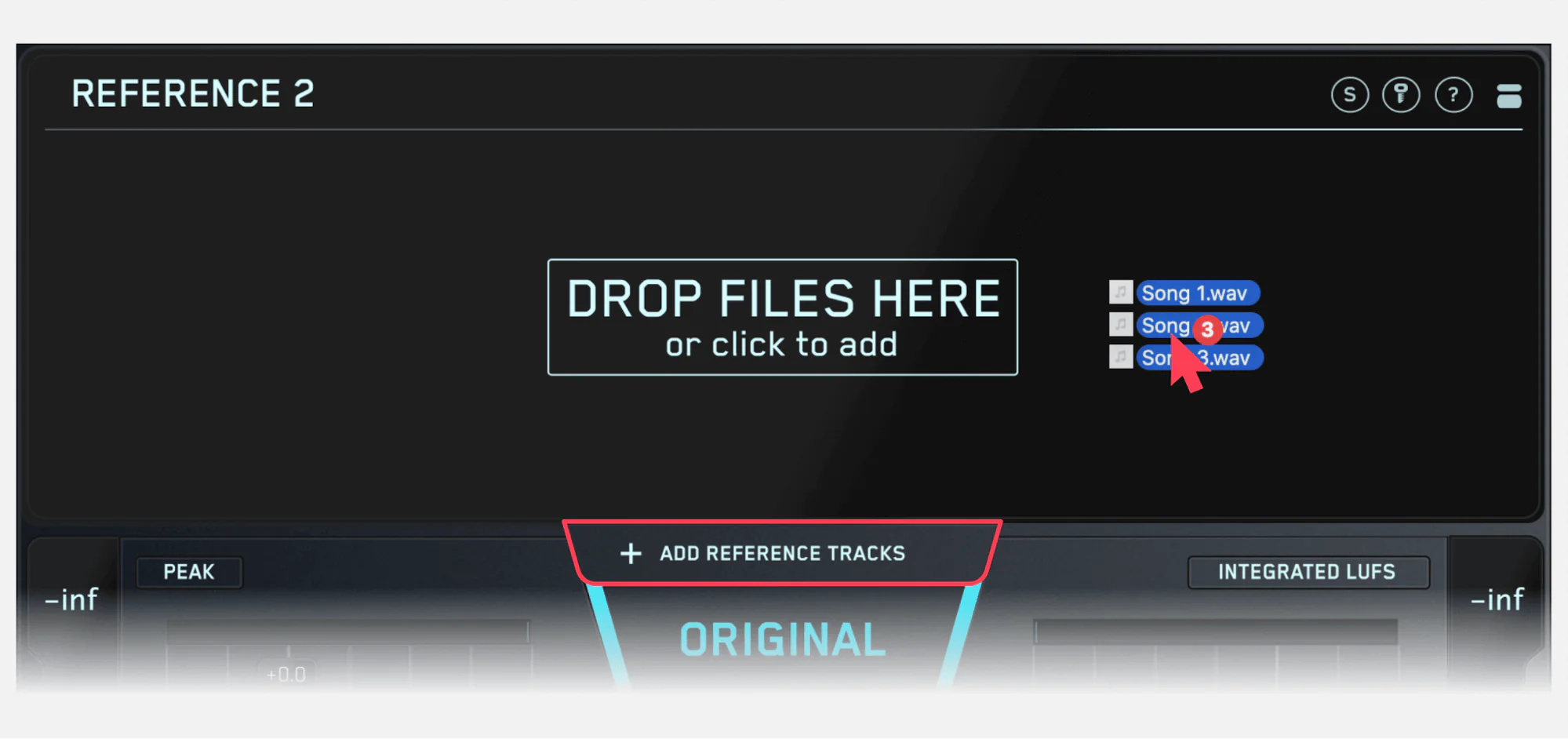
Matching Loudness: REFERENCE will automatically adjust the loudness of your reference tracks to match your mix. This is crucial for a fair comparison, as differences in loudness can deceive our ears into thinking one track sounds fuller or clearer than the other.

Analyzing Tonal Balance: Use the Trinity Display to visually compare the EQ balance of your mix to your reference tracks. This helps identify areas in your mix that might need more attention, such as insufficient bass or overly harsh high frequencies.

Stereo Width Comparison: REFERENCE also allows you to compare the stereo width of your mix with your reference tracks. This can highlight if your mix is too narrow or wide in certain frequency ranges, ensuring your track feels spatially on par with professional productions.
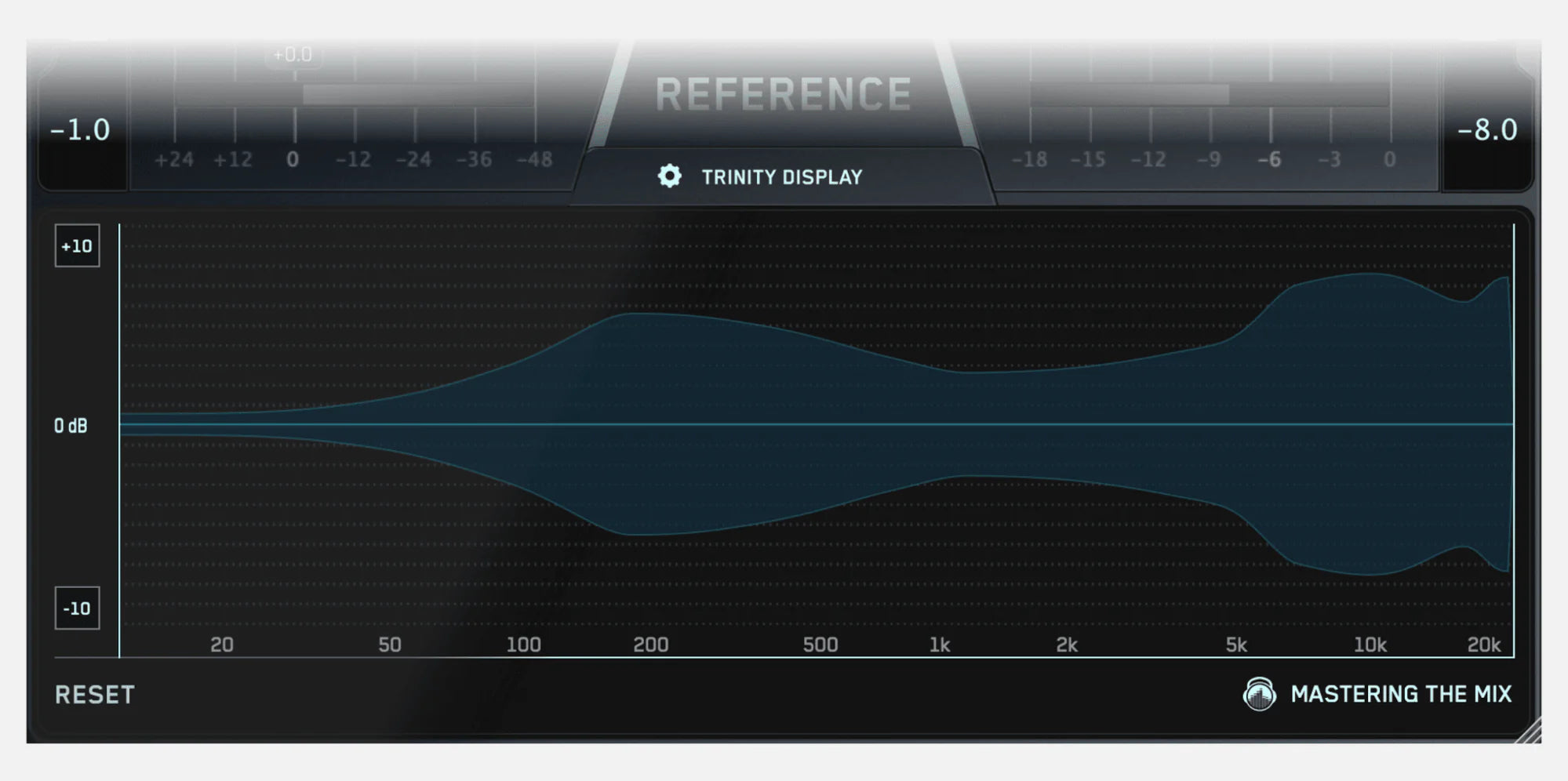
Dynamic Range Analysis: Finally, observe the dynamic range of your reference tracks compared to your mix. This can inform decisions on compression and limiting to either enhance or control dynamics.
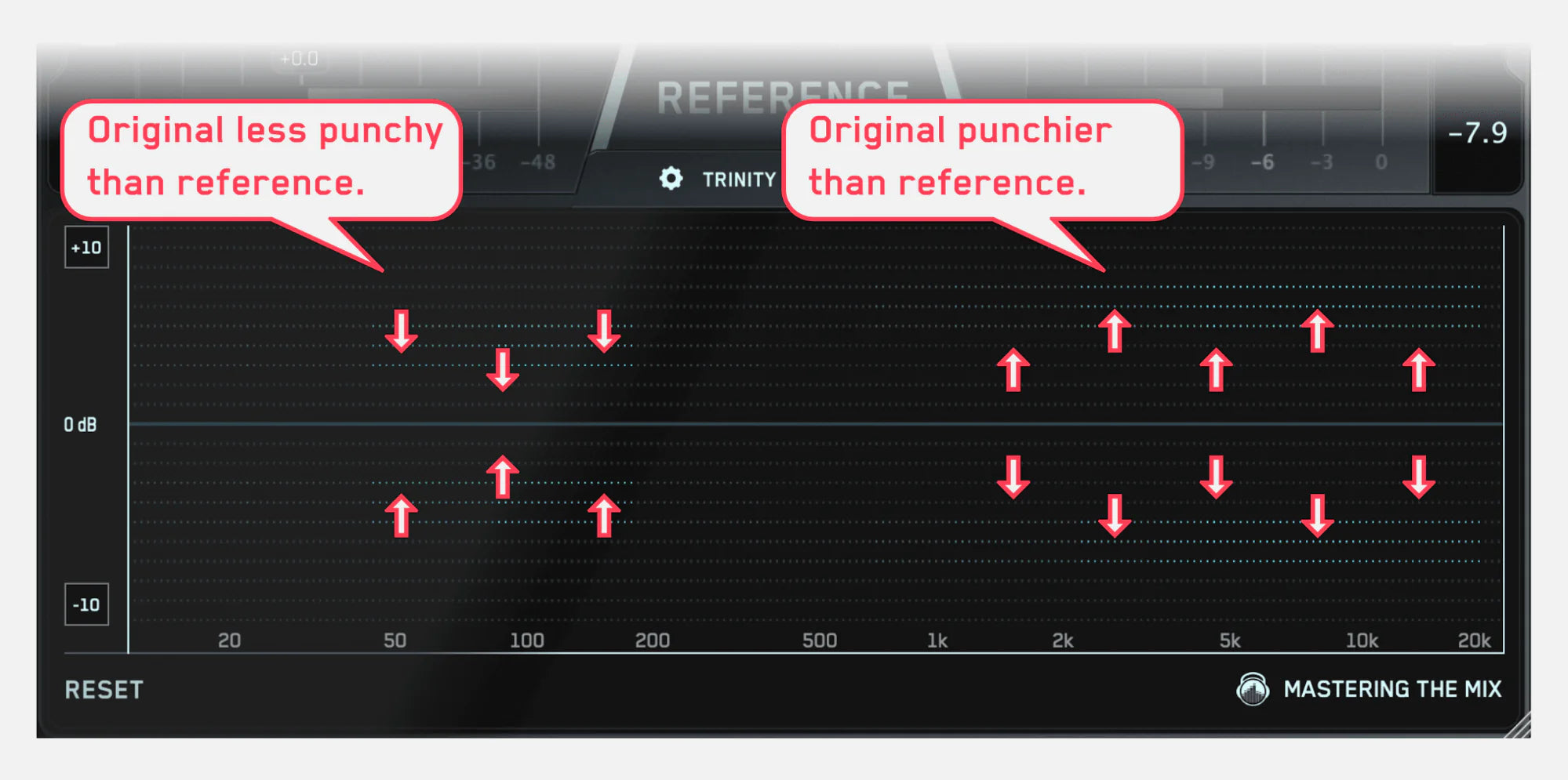
Learning from References
Using REFERENCE effectively can significantly improve the quality of your mastering. It provides an objective lens through which to view your mix, helping you make decisions based on industry standards rather than guesswork. This can be especially helpful when mastering across different genres, as each genre has its unique sonic characteristics.
The key to mastering, as with many aspects of music production, lies in critical listening and informed decision-making. REFERENCE by Mastering The Mix aids in both, ensuring that your final master not only sounds great in isolation but also holds its own against the best in the business.

Case Study: Uptown Funk
When examining Grammy-winning pop songs, the mastering often plays a pivotal role in their success. Take, for instance, a track like "Uptown Funk" by Mark Ronson featuring Bruno Mars, which won Record of the Year at the 58th Grammy Awards. The mastering of this track is a testament to precision and balance, contributing significantly to its widespread acclaim.
One of the standout characteristics of its mastering is the impeccable balance between clarity and warmth, ensuring that each element, from Bruno Mars' dynamic vocals to the track's vibrant horns and rhythmic bass, sits perfectly in the mix.
The high-end is crisp without being piercing, allowing the track's infectious energy to shine through, while the low-end is punchy and well-defined, providing a solid groove that is essential in pop music.
This sonic quality, achieved through meticulous mastering, played a crucial role in the song's ability to resonate with a broad audience and ultimately helped it secure its Grammy win.

Conclusion: The Art of Mastering Across Genres
As we journey through the intricate process of mastering across various musical landscapes - from the polished sheen of Pop to the raw energy of Rock, the pulsating beats of Electronic, the emotive dynamics of Classical, the sophisticated nuances of Jazz, and the rhythmic prowess of Hip Hop - one thing becomes clear: mastering is an art form that demands both precision and creativity.
The mastery of EQ, dynamics, and loudness plays a critical role in transforming a good mix into a great master. Each genre presents its own set of challenges and requires a tailored approach to truly shine. By understanding these unique requirements, mastering engineers breathe life into the music, ensuring it not only sounds its best but also resonates with its intended audience.
Moreover, tools like REFERENCE by Mastering The Mix are invaluable in this process, providing the necessary perspective to compare and refine our work against established standards. They enable us to achieve a balance where our music can stand proudly next to the giants in our genre.
In conclusion, mastering is more than just a final step in music production; it's a crucial bridge between the artist's vision and the listener's experience. It's a blend of science and soul, where technology meets art, ensuring every genre of music reaches its full potential. Whether you are a budding music producer or a seasoned mastering engineer, remember that the heart of mastering lies in understanding and respecting the diversity of music, and in using your skills to bring out the best in every track.







